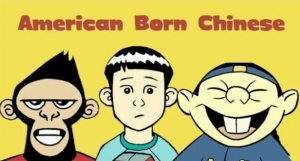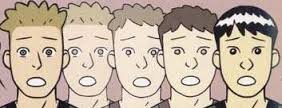So keep posting to this site. I want to hear about the new books you discover, and I bet others do as well. Tell us what your students are reading. Post Top-10 lists.

Top ten red word
I’ll start with one of my own: In no particular order (these all rate #1 for me) here’s my Top-10 fantasy series list. Most of these were written for the YA audience, but adult fantasy fans will love them as well.
1. LOTR. I’ll only add that this of course includes The Hobbit, The Silmarillion, Unfinished Tales, Tree and Leaf by Niggle, Farmer Giles of Ham and just about anything else Tolkien wrote, including his translations of Old and Middle English poetry.
2. Michael Scott, The Alchemyst. Remember the first Indiana Jones movie, which barely left you a moment to breathe before sending Indy into another frenzy of breakneck action? Scott’s series does the same for twins Josh and Sophie, who team up with Nicholas Flamel to save the world. Fun, with mythological characters from the world’s cultures, along with a few heroes who ought to be dead but aren’t. Read the series BEFORE the movies come out (currently in production).
3. Cornelia Funke’s, Inkheart. Meggie and her father, a bookbinder, are hiding. When her father disappears, Meggie must rescue him. It sounds tame, but the bookbinder is able to make fictional characters real by reading aloud, and it’s this unique skill that has caused all the trouble in Meggie’s world, including the loss of her mother. The complex plot challenges the best of readers, but is well worth the effort.
4. Mary Norton, The Borrowers. There are no magicians or dragons in this series, just tiny beings who live alongside humans, putting scavenged items (needles, bread crumbs, wine corks) to use. When they’re discovered, they must run. The books take them afield, afloat, and aloft before finally settling them in a safe home. The fun part here is seeing our familiar world from a height of only 3 inches.
5. Edward Eager, Half Magic. A coin grants only half a wish. A box turtle and a lake make magical things happen. A toy castle leads to another world. This series, inspired by E Nesbit’s stories, features 3 different families of children, whose paths occasionally cross. These are old-fashioned books, with less action than readers have come to expect from YA fantasy. But the characters face challenges that require intelligence as well as strength, and Eager’s writing is excellent.
6. Pseudonymous Bosch, The Secret Series. The author’s comical “Don’t read this, you’ve been warned” trope never wears thin. Cass and Max-Ernest need the entire series to solve the murder of a local magician (not the fantasy type of mage, but rather the type who pulls rabbits from hats). Bosch puts himself repeatedly in danger by revealing secrets too dangerous to know, with only chocolate to keep him going. Funny, scary, adventurous, with truly evil villains. And, just as an interesting aside, the five volumes use the traditional five senses (smell, sight, taste, touch, sound) as framing devices.
7. Ursula K. LeGuin, A Wizard of Earthsea. Classic world-building, with themes that encompass coming of age, loss of religious belief, facing death, and feminism. By the end, LeGuin has posed the question: what is a woman’s place in a world where men have defined “true magic” as a male-only realm of power?
8. Garth Nix, Sabriel. A series in which a Necromancer is on the side of good! And the Necromancer is a young woman! Kudos to Nix, for creating such a complex and harrowing world, where the dead rebel and the living must control them.
9. Diana Wynne Jones, Chrestomanci. Jones’ magicians are memorable: Howl, from the Howl’s Moving Castle series, and Christopher Chant, from this one. A Chrestomanci is a wizard with nine lives (yes, just like a cat), who must come when called and solve the problem presented to him. As with the best of fantasy, the simple premise opens up to a complex plot.
10. Philip Pullman, His Dark Materials. This is heady reading, not for the faint of heart. Working from Milton’s Paradise Lost, Pullman builds a world in which our souls are visible external beings (dæmons), and the villains have created a procedure to excise these dæmons. The series can be enjoyed without reference to Milton, but Pullman’s purpose is strengthened when seen within the context of “man’s first disobedience.”
Honorable mention: E Nesbit, Susan Cooper, J K Rowling
–BR
 In a 2011 Wall Street Journal blog post, Sherman Alexie explains why YA books that address real issues of violence, death, sexuality, and other horrors need to be available for teen readers.
In a 2011 Wall Street Journal blog post, Sherman Alexie explains why YA books that address real issues of violence, death, sexuality, and other horrors need to be available for teen readers.




